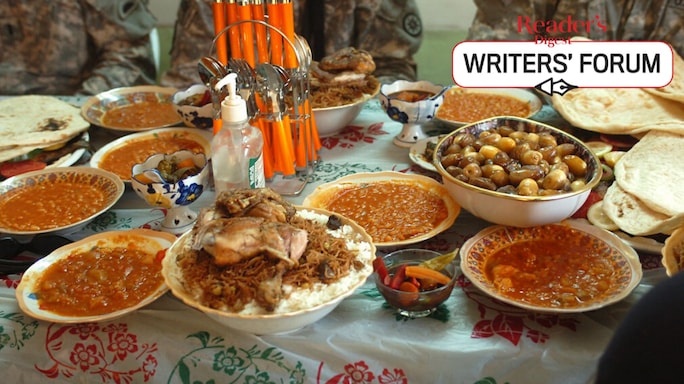My Very Bengali Ramzan
During Ramzan every year, I am transported to my childhood—the feasting and circle of love in our family home
 Image used for representative purposes only. (Photo courtesy Flickr)
Image used for representative purposes only. (Photo courtesy Flickr)
I am 10 again and basking in the warmth of the wafting aroma of meat cooked all night. For the little me, Ramzan meant a month-long feasting, followed by the excitement of Eid it brought along.
I grew up in Asansol in an interfaith household—Ma, a Hindu and Abba, a Muslim—and lived in a joint family surrounded by Dadi, uncles, aunts and cousins. Every night we were awakened around 3.30 a.m. by the muezzin’s assistant, banging loudly on our doors. A ritual so eerie, that it terrified my brother and me and jolted us out of sleep.
Then, we sat along the open kitchen corridor, watching Dadi stir up a formidable Shehri—fresh dhuki (rice cakes), parathas with shami kebabs, nargisi koftas, nihari, haleem and paya. I can still smell and taste the succulent paya—its aroma rising from the handi as Dadi removed the lid—cooked overnight on the oven. Had with birista (caramalized) onions, coriander leaves and a squeeze of lemon, this dish and its fragrance defined my childhood. Sometimes Dadi made kosha gosht—the meat so intense in colour that I wondered if she had poured red ink into it.
Iftar was also lavish—with dates, juliennes of ginger, black chana with onions and tomatoes, phuluri (flat daal pakoras), pyenaji (pakoras), beguni, ghugni, and fruits, washed down with homemade lemonade—all eaten around a dastarkhan (a decorated spread on which the feast was laid). Sometimes my Phuphus (aunts) joined us—each bringing their own speciality of homemade amriti—the size of pinwheels—aloo-kabli (chaat) and rosogollas. If Ma returned from work early, she made peas kachori, malpuas, halwas, payesh and gulab jamuns—giving the Iftar her very own touch. Iftar was always vegetarian except when Afzal chachaji (Abba’s best friend) sent us trays of keema samosas and an array of kebabs.
 The author's Dadi (Photo courtesy Saleha Singh)
The author's Dadi (Photo courtesy Saleha Singh)
You would think, with all this, the dinner would be light, but not so at the Begg household. My aunts showed their prowess in making chaap, rezala and their special meat curries or macher kalia—all Bengali festive delicacies. After a week of this heavy food, Ma—brought up in a Hindu household—would revert to vegetarian dinners for us. So, while the rest of the family had meat-laden dinners, Ma cooked us a light raw-banana stew and a dry bottle gourd sabzi, normally the staple for chronically upset-stomach Bengalis. On a good day, she ordered masala dosas, chow or Mughlai porota from the ‘it’ places in town.
I was about 10 when I kept my first roja (notice how we Bengalis say it with a J?). It wasn’t so much the hunger but the thirst that did me in. But Ma was so happy that she bought me a Sound of Music dress—the kind Julie Andrews wore on the poster.
What are festivals without new clothes? So sometimes midway through Ramzan, Ma would take us shopping. While I had my pick of shararas, ghararas, lungis and tops; my brother—a Rajesh Khanna fan—found solace in his Guru-shirts. Next stop, the footwear store, which had the most beautiful wedges, platforms and block heels—all carefully chosen to match my clothes.
On Eid day, we were ready in our new clothes since early morning, impatient to rush to the Eidgah, while the women cooked sewai and parathas. Nearly 40 of our relatives would gather at our house and we would excitedly board our very own family bus—a ritual I miss sorely. For as long as I remember, we had Eid lunch at Afzal chachaji’s house, which Tabassum chachi cooked so lovingly. We started with mattha, followed by biryani, succulent kebabs, a gosht curry—swimming in oil but, oh-so-delicious—and sewai. By evening, we were exhausted—satiated with the most amazing food—and sad that the day had ended so quickly.
 Sewai (left) and kosha gosht (right) cooked at the author's home (Photos courtesy Saleha Singh)
Sewai (left) and kosha gosht (right) cooked at the author's home (Photos courtesy Saleha Singh)
It’s been more than 40 years since I left Asansol, but every year I am back there in my head for Ramzan. I have tried to recreate Ma’s peas kachuri and malpua, and Dadi’s nihari and paya. But the packaged masalas, in the faraway land that I have now made my home, do not cut it. Their touch, and the love with which they stirred up these festive foods, is probably missing.






